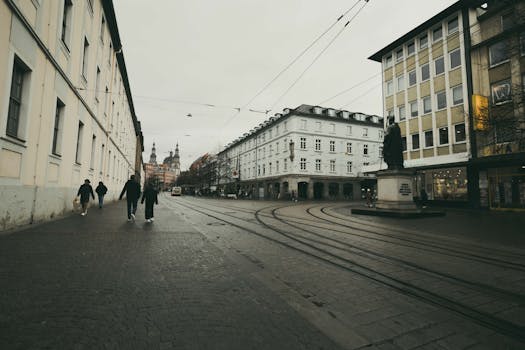
Urban Green Spaces: The Future of Outdoor Living in European Cities by 2025
Introduction to Urban Green Spaces
Urban Green Spaces: The Future of Outdoor Living in European Cities by 2025 is a concept that has gained significant attention in recent years. As the world becomes increasingly urbanized, the importance of green spaces in cities cannot be overstated. Urban green spaces refer to areas of vegetation, water, and other environmental features within urban environments. These spaces can range from small parks and gardens to large nature reserves and green roofs. In this article, we will explore the future of outdoor living in European cities, with a focus on urban green spaces and their role in promoting sustainability and enhancing the quality of life for citizens.
The Benefits of Urban Green Spaces
Urban green spaces offer numerous benefits to both the environment and human health. Some of the most significant advantages of urban green spaces include:
- Improved Air Quality: Urban green spaces can help to reduce air pollution by absorbing pollutants and producing oxygen.
- Climate Regulation: Green spaces can help to mitigate the urban heat island effect, reducing the temperature in cities and improving comfort for citizens.
- Mental Health Benefits: Spending time in nature has been shown to have a positive impact on mental health, reducing stress and improving mood.
- Biodiversity Conservation: Urban green spaces can provide habitats for wildlife, helping to conserve biodiversity and support ecosystem services.
European Cities Leading the Way
Many European cities are at the forefront of urban green space development, with innovative projects and initiatives aimed at creating sustainable and livable cities. Some examples include:
- Copenhagen’s Green Roofs: The city has implemented a policy requiring all new buildings to have green roofs, providing insulation, reducing stormwater runoff, and creating habitats for wildlife.
- Barcelona’s Superblocks: The city has introduced a program to pedestrianize streets and create green spaces, reducing traffic congestion and improving air quality.
- Amsterdam’s Green Infrastructure: The city has invested heavily in green infrastructure, including parks, green roofs, and green walls, to improve water management and reduce the urban heat island effect.
Challenges and Opportunities
While urban green spaces offer numerous benefits, there are also challenges to be addressed. Some of the key challenges include:
- Space Constraints: Many cities face space constraints, making it difficult to create new green spaces.
- Funding: Creating and maintaining urban green spaces requires significant funding, which can be a challenge for cities with limited budgets.
- Community Engagement: Encouraging community engagement and participation in urban green space development is crucial to ensuring the long-term success of these projects.
Conclusion
Urban green spaces are a vital component of sustainable and livable cities. As we look to the future, it is clear that these spaces will play an increasingly important role in promoting sustainability, enhancing the quality of life for citizens, and supporting ecosystem services. By investing in urban green spaces, European cities can create healthier, more livable, and more sustainable environments for generations to come.






